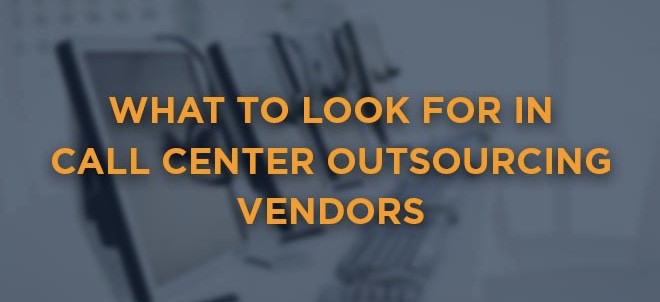By Eric Sims, President of Leading Edge Connections
I’ve been in this industry for almost 13 years now. I’ve seen the good, the bad, and the ugly. Too much ugly. About 2 years ago two buddies of mine and I decided we were tired of working for other companies who seemingly just didn’t get it. We started looking around the industry, talking to other leaders, surveying friends who staffed the industry, visiting with past clients, and gathering as much info as we could. What works? What doesn’t? What do we like? What do we hate? Where are the pain points? And what does success look like?
At the end of this exploration we found that we had a model for doing business in the contact center industry that we felt was fresh, honest, progressive, beneficial, needed, and financially sustainable. We took all the info and opinions we had collected on the “we hate this” and “failing” side of the board and decided, “we aren’t going to do this at all, or at least we aren’t going to do it the same old way.” It was time for a change in our book. So, from that authentic creative process our company Leading Edge Connections was formed. A contact center business for the NOW, and in the NOW Business. But, this isn’t an article about LEC. This is an awareness letter to anyone looking to explore hiring a contact center for any reason. We want you to know what to look for, what to stay away from, and how to position yourself for success. The truth is there are a ton of liars, crooks, and assholes in this industry. Believe me! One company I worked for is the absolute worst of them, and no I don’t mind putting them on blast. The things I saw and heard in meetings would make you sick, and I personally don’t want anyone else to fall victim to predators like these in our industry. I digress. I just know this business can be done right, and in a way, where everyone can win. And by everyone win, I mean the owners, employees, clients, vendors, etc.
So, here is my list of things to look for when evaluating an onshore call center and why. No particular order here.
The first thing I want to bring up for consideration when looking at a contact center is the location. If you are dealing with someone who runs a brick and mortar center, or centers, they are tied to a 3–5 mile geo-circle of their location. What does that mean? It means every hire they have must come from within that circle. This means that the surrounding neighborhoods income, average education level, and overall demographic come into account.

Let me give you an example. I once knew of a BPO who opened a center in upstate New York. They were so excited to get the new site, and the new business. Big new building, big new account and lots of potential growth. The lease was priced right, and it was in a beautiful part of town. Great neighborhood! When you pulled up to the building it had tons of parking, restaurants close by, massive break rooms, new carpet and a break area out back. Everything you would want. Well except it was 2 miles from a bus stop, had no signage, and was located in a middle-class white area where the average income was 80K a year and they were paying roughly 28K a year to the agents. The company could not find entry level sales people to scale the contract properly so the location killed its ability to sustain the great business.
Some housekeeping items to consider when looking at an outsourced centeris the location, the hours of operation and the surrounding competitors. At the end of the day there are only so many GOOD people in a 3 to 5-mile radius of a building. What does the recruiting pool look like? Don’t just take their word for it. They’ll tell you it’s great. Will all those good people come to work for this one company for the pay, hours and work? Be smart, if you couldn’t get people to do this work for $13 hour how can they? Are there other competitors in this market that will cause a constant battle over talent? Stats prove tenure is huge so think about this. Is there adequate public transportation, if needed? If this is entry level stuff chances are you’ll need a percentage of people who would need this benefit. This is why I ended up with a 100% Virtual work at home or work at DORM model with LEC. The hiring pool is North America and for me the answer to the million-dollar question was simple. Are there more great people in a 3 to 5-mile radius of this building or in North America? Answer….. North America!

Number two here is the actual work environment. What does the place look like, feel like and have in it? Most companies take the time to visit a location but they fail to really pay attention, and become aware of what’s really important. The reality is you outsource for two reasons people and technology. What is the condition of both? When you walk in what does the carpet or flooring look like? Are they reinvesting in the two things that matter most? Does the tech look like something you’d find in a bad 80’s movie?
I worked for a company, the one I mentioned in the second paragraph, and the site looked great on the outside. They failed the first test of location by my standards, but it was still nice looking on the surface. Upon close evaluation you would find something different. Carpet and cubes hadn’t been cleaned in 5 years. The air ducts were so dirty that it was making employees sick, and the technology the agents used was archaic. These are early signs of issues. Again, you are hiring for people. People are as only as good as the mental and physical environment you put them in. If it’s filthy and making people sick you will have performance issues. If a company neglects what’s most important to the business as a whole what will they neglect with you?
Another couple of things to look at while there are the total number of seats, total seats empty, number of programs/clients in the building and the vibe. Listen to your gut! We can all pick up on that negative stuff quick if we listen and investigate. Ask lots of questions! If the site is half empty, ask why. If the phones look old say something. Go in the restroom and look around. Is it clean? Check out the break rooms. Is there money invested in the work to life ratio of the people or are there 3 vending machines with HoHos and candy bars in them? These are the areas where the people who are meeting and talking to your customers live. Look at agents’ cubes. Are they clean and up to date? Look at the chairs! Are they old, mismatched, and broken? Ask yourself, is this environment conducive for attracting and housing enough great employees for my project? That’s why LEC went virtual! Best place to work? At your home or dorm! The comfort of your own desk, bed, couch, patio or lazy boy! We want our agents happy and comfortable. Able to access their own life easily and the way they like it.

Ok, number three is typically skipped altogether by people looking for a center. Remember, I spent the last 12 years entertaining clients coming in to centers looking for a home for their projects. Don’t forget, this is your business you are handing off to someone else to execute on. You damn sure better make sure the employees they have, or will hire, can conduct your business for you. This category is Employee Experience or as I call it EX.
Here is what will happen. You’ll talk to a slick sales guy or business development guy who typically doesn’t go to the centers except on site visits from potential clients, or during QBRs. He’ll tell you that the employee environment is great. We do spiffs! We have career pathing! Our retention is great! We have a culture of growth and success. I mean these guys will lay it on thick and have the cool power points to back it up. Truth is that with brick and mortar centers this is highly unlikely. In surveying numerous contact center leaders and employees over the years I have only heard of a handful of companies that do this right. One poor one in particular manufactured retention numbers that were 100% fake. Their attrition was almost 200% and they were claiming 75% (which in that world isn’t terrible if you can believe.) They claimed to have agents with an average tenure of 2.5 years but the truth was they excluded one high turnover project and only included a help desk group in that calculation that didn’t performance manage low performers out.
Here is what to do. Talk to the employees. Not the ones they bring you! Those will be coached and staged for your viewing pleasure. Look at the Glassdoor, Google, and Indeed reviews. Although the stars or ratings maybe skewed find the ones where people are unhappy. How many are there and what are their reasons for being unhappy? Ask the employees to describe the culture to you. Evaluate the employee culture while there. Ask the company for hard proof of any claim. If they say they have career pathing have them show it to you. Don’t be afraid to push for proof! You are getting in bed with someone. You better know who the hell they are. Think of when you dated. First date someone presents who they want you to think they are. 6 months in you find out enough to learn who they really are. Sometimes that can be two totally different people. Are they transparent with their strengths and weaknesses? A call center doesn’t have to be perfect. It needs to meet your needs and be a relationship you can see yourself in. If a company isn’t employee centric how can it be customer centric? Your asking people to impart something on others that they themselves do not possess.
The last area I want to cover on this article is company culture and values. When you are thinking of contracting a business to conduct your business you need to know they have the same, or at least aligning values as your business. What are the core values of your business? What are theirs? Are certain aspects of business and life imperative to your brand? If yes, do the outsource company’s align with yours?
I have a really progressive client now that is huge on progressive movements in culture, politics and life. They don’t do business with just anyone for that very reason. When I look at our business at LEC today and the other companies I’ve been with I can definitely say this client wouldn’t go with any of them. Why? How are women viewed in the work place? I’ve been in multiple centers where it’s a 100% boys club in leadership. Think about this. If you have a healthy gender leadership environment and the outsourced center doesn’t, how will that work well with leadership interaction? It’s not aligned. If your organization is big on transparency, problem solving, and creating solutions, but the center’s culture is one of fear, brow beating, and hidden agendas, how will that work? You need to make sure you discover this stuff. Is what’s imperative to you imperative to them? They will tell you it is, but does their culture already demonstrate that truth? Investigate and you’ll be amazed. I know for a fact that if some of the clients I worked with at former companies new the truth they would cut tail and run for the hills.

So, there is more ground to cover here, but this blog is long already! I think I will continue this convo on video. Things like evaluating their leadership, contracting, customer base and references.
· What are their management ratios?
· What is their leadership development plan?
· What percentage of their leadership is internal vs external grown?
· What does their client portfolio look like?
· Do they handle business like your successfully?
· Can they provide real references that you can speak to?
· If they have customers who love them they would be willing to talk to you?
· Are they vertically integrated and do they have diversity in clients?
· Is their contracting progressive and done in a way for today’s business?
I mentioned this early. There are a lot of bad organizations in this industry, but there are some good people too. That said, it’s one of the reasons I feel like I have a competitive advantage. I know the lies, cheats, and shortcomings. My team is committed to vigorous honesty, hard work and being open to change as we grow. Outsourcing is a smart, and viable solution for many companies out there. Don’t misunderstand me. What I am suggesting is that you vet out who you work with very well, not avoid outsourcing. For me I do the same thing with prospective clients. I have turned down numerous clients already at LEC because it wasn’t a “MATCH”. We could have signed the deal but it was bad money. Let’s be real! There is no shortage of money and business out there, so it’s important you find the business that’s right for you and your team. My goal with this article was to inform and expose. I want to inform people new to outsourcing on how to go about it successfully, and I want to expose the abusers in our industry as well. Business can be done where everyone wins!
For more information on an outsourcing partner who is ready for busines NOW and in the NOW business contact us at Leading Edge Connections LLC.

Live & Lead Exceptionally,






Leave A Comment